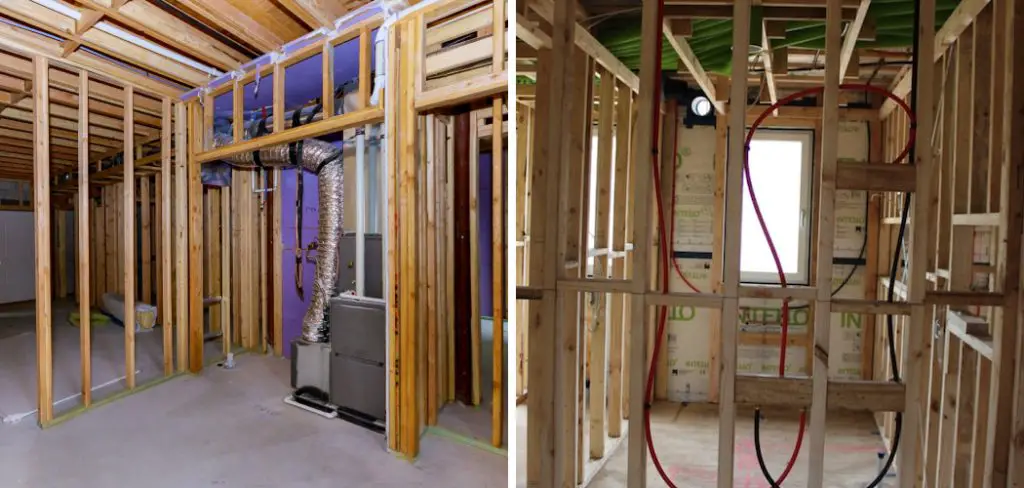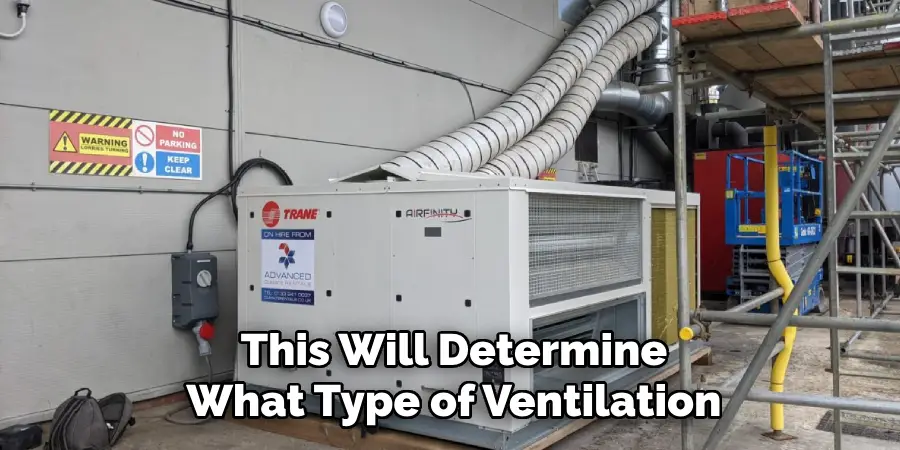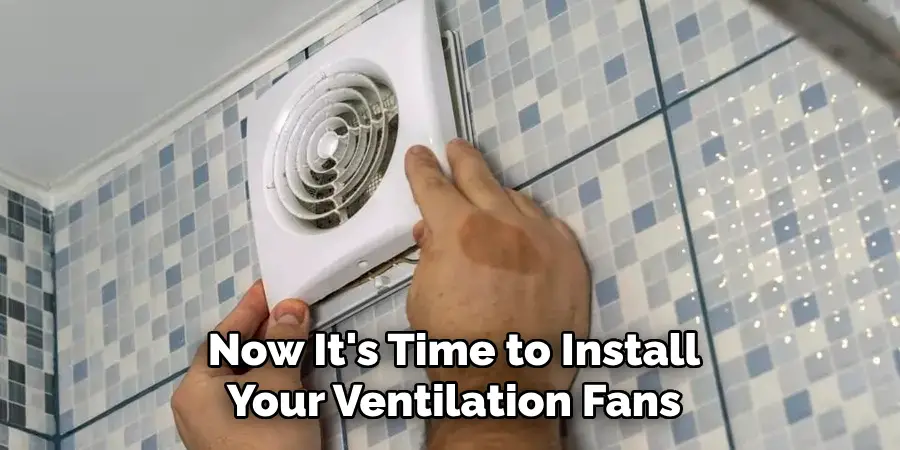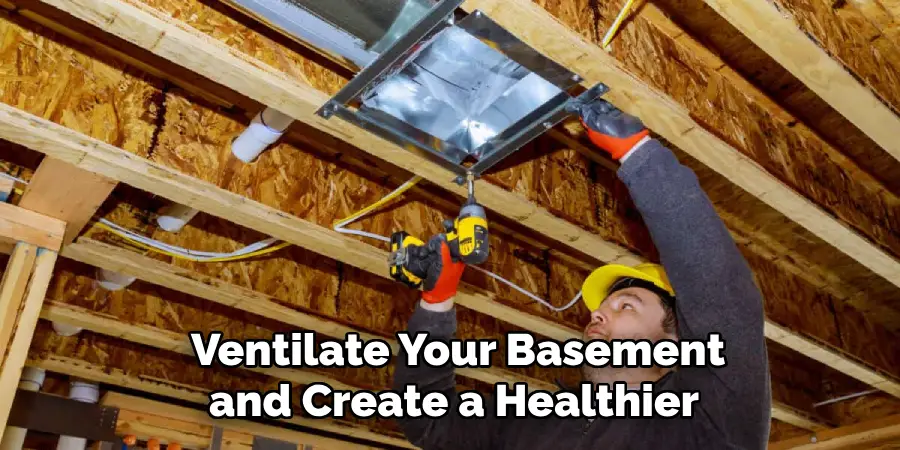Whether you’re looking to add more living space by finishing your basement or improving the air quality of your home, properly ventilating your basement is an important project.

For many years, our unfinished basement was stuffy and damp and felt closed off from the rest of the house. Opening up that space has made our home feel larger and more comfortable to spend time in.
Recently I finally decided to tackle the ventilation issue and I’m happy to share the steps I took to thoroughly air out our basement. I’ll cover the various venting options available, things to consider like your home’s layout and local building codes, and the process I went through to install ventilation fans and additional windows.
By the end of this post on how to ventilate a basement, you’ll have the knowledge to breathe new life into your basement and gain a usable, dry room that adds real value to your property.
Needed Materials
Before you get started on the project, make sure you have all the necessary materials. Here’s what I used for my basement ventilation:
- Ventilation Fans (Ceiling or Wall-mounted)
- Ductwork
- Exhaust Hood/hood Vent
- Window Fan(S) and Window Screen(S)
- Appropriate Screws, Bolts, Connectors Etc.
As always, check local building codes and regulations to ensure you have all necessary permits before starting any work on your basement. Safety first!
11 Step-by-step Guides on How to Ventilate a Basement
Step 1: Plan Your Ventilation System

The first step in any project is to have a plan in place. Consider the layout of your home and where you want to add ventilation. This will determine what type of ventilation system you need and how many fans you’ll require. You’ll also want to make sure there’s an adequate power source nearby for your fans. But don’t worry, we’ll cover all of this in more detail later on.
Step 2: Choose Your Ventilation Type
There are three main types of ventilation systems that you can use for your basement: natural ventilation, mechanical ventilation, and hybrid ventilation. Each has its own pros and cons, so it’s important to understand the differences before deciding which one is right for your space. Although it can be done, we recommend using a combination of strategies to get the most effective ventilation.
Step 3: Calculate Your Ventilation Needs
The size and layout of your basement will determine how much ventilation you’ll need. Typically, you should aim for at least one air change per hour (ACH). This means having enough fans and vents to completely replace the air in your basement once every hour. You may want to consult a professional for help determining the appropriate ventilation needs for your specific space.
Step 4: Install Ductwork
If you’re using a mechanical or hybrid ventilation system, you’ll need to install ductwork to move air in and out of your basement. This can be a complex process so it’s important to follow instructions carefully and ensure that all connections are properly sealed to avoid any air leaks.
It’s also important to make sure that your ductwork is the appropriate size for your fan and vent. This will ensure optimal ventilation performance.
Step 5: Install Exhaust Hood/Vent
The exhaust hood or vent is an important component of your ventilation system as it serves as the outlet for stale air to be removed from your basement. Make sure you place it in a location that’s easily accessible and where it can effectively expel air outside.
You may also want to consider adding a weather hood to prevent outdoor elements from getting into your basement. You can purchase one separately or opt for a vent with a built-in hood.
Step 6: Install Ceiling or Wall-Mounted Fans

Now it’s time to install your ventilation fans. These are what will circulate fresh air into your basement. You can choose between ceiling or wall-mounted fans, depending on the layout of your space and personal preference.
Make sure you follow the manufacturer’s instructions for installation and securely mount the fans to avoid any potential accidents. Otherwise, you can always hire a professional to install the fans for you.
Step 7: Install Window Fans
If you have window wells in your basement, you can also use window fans as an additional way to bring fresh air into the space. Simply install them on the windows and make sure they’re properly sealed and secured. Window screens are also important to keep out any unwanted debris or insects while still allowing for proper ventilation.
Step 8: Consider Additional Windows
If your basement doesn’t have existing windows or they’re not in a suitable location for ventilation, you may want to consider installing additional ones. This can be a more costly option, but it will add natural light and fresh air to your basement space. Just make sure you follow all building codes and regulations when adding new windows.
Step 9: Ensure Proper Insulation
Insulation is important for any part of your home, including the basement. Proper insulation will not only help with ventilation but also prevent any drafts or moisture from seeping in. It’s important to insulate all walls and windows, as well as any ductwork that may be exposed. I recommend consulting a professional for help with insulation to ensure everything is properly sealed and insulated.
Step 10: Install a Dehumidifier
If you have issues with excess moisture in your basement, it’s a good idea to also invest in a dehumidifier. This will help reduce humidity levels and prevent any mold or mildew growth, which can be harmful to your health and damage the structure of your home.
Make sure to regularly clean and maintain the dehumidifier for optimal performance. If you’re unsure about the humidity levels in your basement, you can purchase a hygrometer to measure them.
Step 11: Regularly Maintain and Monitor Your Ventilation System
Once your ventilation system is installed, it’s important to regularly maintain and monitor it. This includes cleaning or changing air filters, checking for any leaks or damage to ductwork, and making sure fans and vents are working properly. It’s also a good idea to monitor humidity levels and air quality in your basement to ensure everything is functioning as it should be.

Following these steps on how to ventilate a basement will help you properly ventilate your basement and create a healthier, more comfortable living space. Make sure to also consult with professionals if needed and always prioritize safety throughout the entire process.
With proper ventilation, you can enjoy your basement as a functional and enjoyable part of your home. So go ahead and add ventilation to your basement, you won’t regret it!
Tips
- If You’re Using a Mechanical Ventilation System, Consider Adding an Energy Recovery Ventilator (ERV) to Help Improve Air Quality and Save on Energy Costs.
- Regularly Open Windows and Doors to Promote Natural Ventilation and Allow Fresh Air Into Your Basement Space.
- Consider Adding Plants or an Air Purifier to Further Improve Air Quality in Your Basement. Some Plants, Such as Spider Plants and Snake Plants, Are Known to Help Remove Toxins from the Air.
- If You Have a Finished Basement, Make Sure to Properly Seal Any Gaps or Cracks Around Windows and Doors to Prevent Air Leaks. This Will Also Help with Insulation.
- Keep an Eye Out for Any Signs of Moisture or Mold Growth in Your Basement and Address Them Immediately to Prevent Any Health Hazards or Structural Damage. If You Notice a Musty Smell, That Could Be an Indication of High Humidity Levels and Poor Ventilation.
- Consider Installing a Carbon Monoxide Detector in Your Basement for Added Safety. This Can Help Detect Any Dangerous Levels of Carbon Monoxide Gas That May Build Up Without Proper Ventilation.
- Lastly, Make Sure to Regularly Check and Clean Your Dryer Vent to Prevent Any Build-Up of Lint or Debris That Can Cause a Fire Hazard. Proper Ventilation in the Laundry Area is Crucial for the Safety of Your Home. So be sure to add that to your regular maintenance routine.
Frequently Asked Questions
Q: Can I Install a Ventilation System in My Basement Myself?

A: It is possible to install a ventilation system yourself, but it can be a complex process and may require some knowledge of ductwork and electrical work. We recommend consulting with professional contractors for assistance or at least thoroughly researching and following instructions if doing it yourself.
Q: How Often Should I Change the Air Filters in my Ventilation System?
A: This can vary depending on the specific system and manufacturer, but it’s generally recommended to change air filters every 3-6 months. Inspecting them monthly for any buildup or damage is also a good idea. If you notice an increase in dust or dirt, it may be a sign that your filters need to be changed sooner.
Q: Can I Use My Existing HVAC System for Basement Ventilation?
A: Your existing HVAC system may already contribute to ventilation in your basement, but it may not be sufficient on its own. It’s recommended to have a separate ventilation system specifically designed for basement spaces, especially if they are typically more damp and prone to excess moisture.
Consult with professionals or do thorough research to determine the best ventilation solution for your basement.
Q: Is Natural Ventilation Enough for My Basement?

A: Natural ventilation, such as through windows or doors, can help with air circulation in your basement. However, it may not be enough on its own to properly ventilate the space. A combination of natural and mechanical ventilation is typically recommended for optimal results. Additionally, natural ventilation may not be available in all basement layouts, so it’s important to consider other ventilation options as well.
Conclusion
In conclusion on how to ventilate a basement, properly ventilating your basement is essential for maintaining a healthy and comfortable home. With these tips and tricks, you can ensure that your basement is free from excess moisture, mold, and musty odors.
Remember to regularly check and clean your ventilation system to keep it in top shape. If you have severe moisture issues in your basement, it may be worth consulting a professional to assess the situation.
Don’t forget about natural ventilation options such as windows or vents, but also consider investing in a dehumidifier for extra protection. We hope this blog post has provided you with valuable information on how to effectively ventilate your basement.
Now it’s time to take action and improve the air quality in your home by implementing some of these techniques. Your future self will thank you for addressing any potential dampness or mustiness before it becomes a bigger problem down the line. So go ahead and give your basement some much-needed TLC – you won’t regret it!
